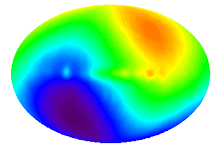Clinical approach to the patient with hyponatremia
1.
Confirm the patient truly has a hypo-osmolar
state by checking serum osmolality
2.
Assess for serious signs or symptoms
suggesting cerebral edema
3.
Determine the duration of development of
hyponatremia (less or more than 48 hours)
4.
Assess the patient’s extracellular fluid
volume status using clinical examination and laboratory testing (spot urine
sodium, serum uric acid)
5.
Check the urine osmolality to see if the urine
is appropriately dilute (< 100 mOsm/kg) or inappropriately concentrated (≥ 100 mOsm/kg)
6.
Assess for underlying causes of hyponatremia
that may correct rapidly with treatment (eg, hyponatremia induced by thiazide
diuretics)
7.
Assess the patient’s medications (intravenous
antibiotics, infusions) and nutritional intake (total parenteral nutrition,
tube-feeding) for sources of water
8. Look for drugs the patient is taking that
potentiate antidiuretic hormone action (ie, selective serotonin uptake
inhibitors)

沒有留言:
張貼留言